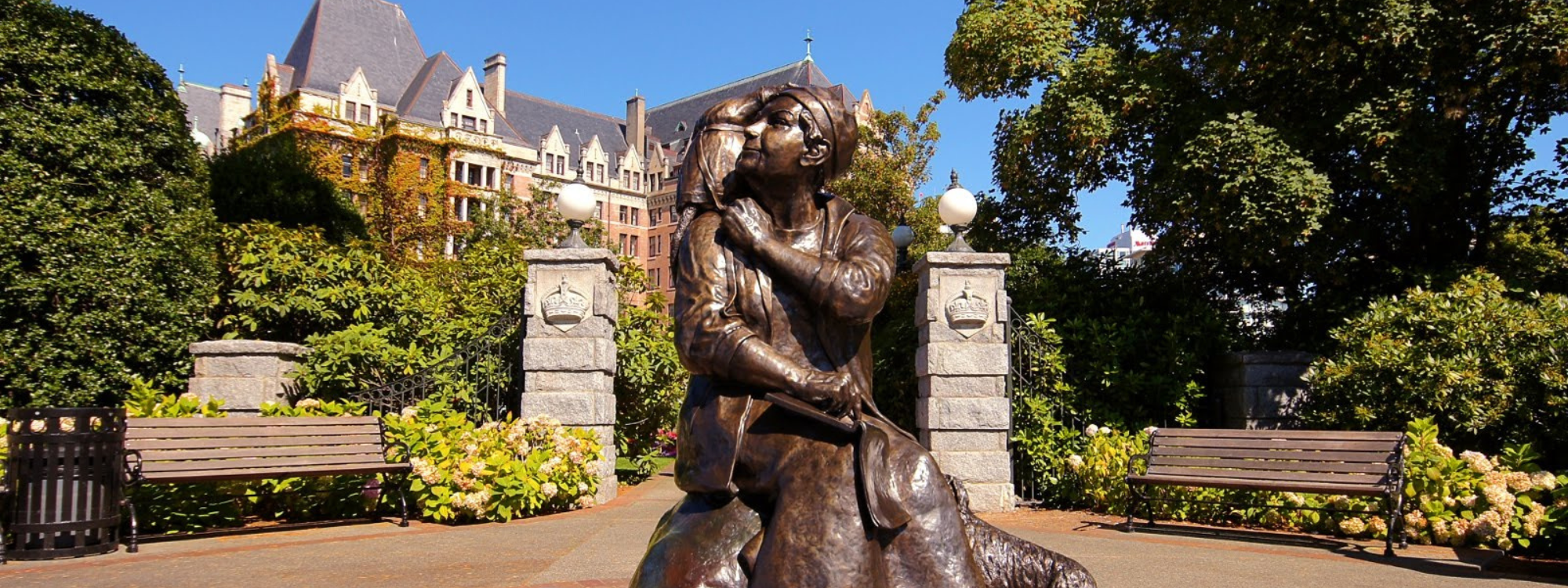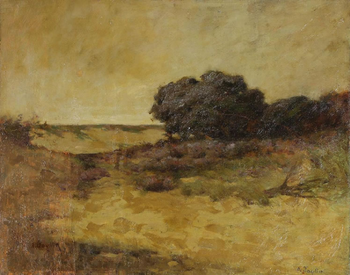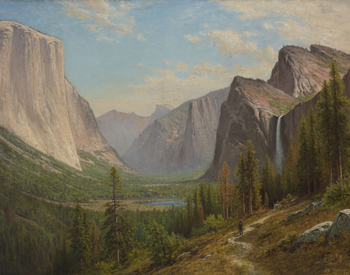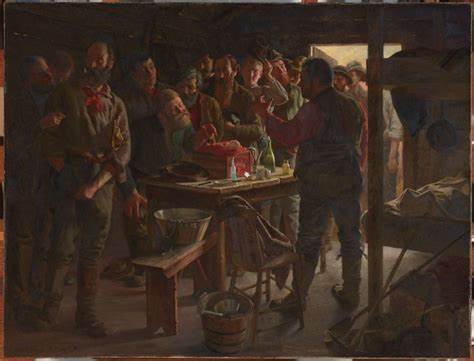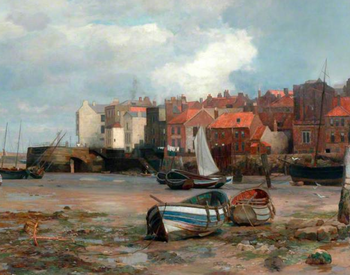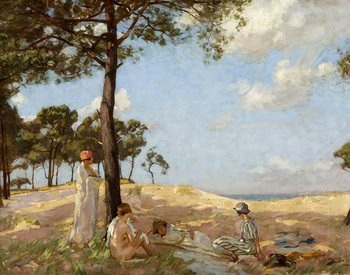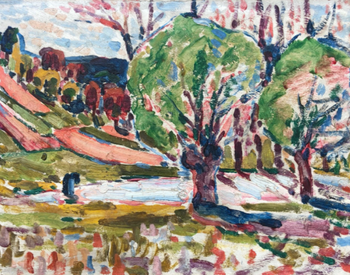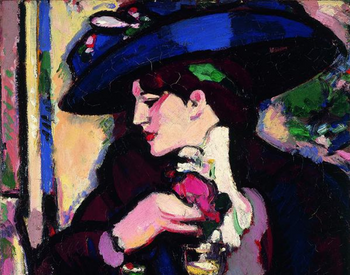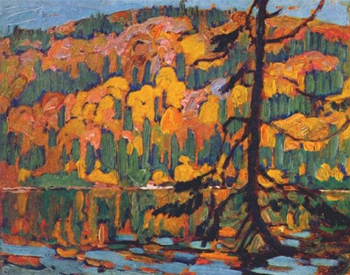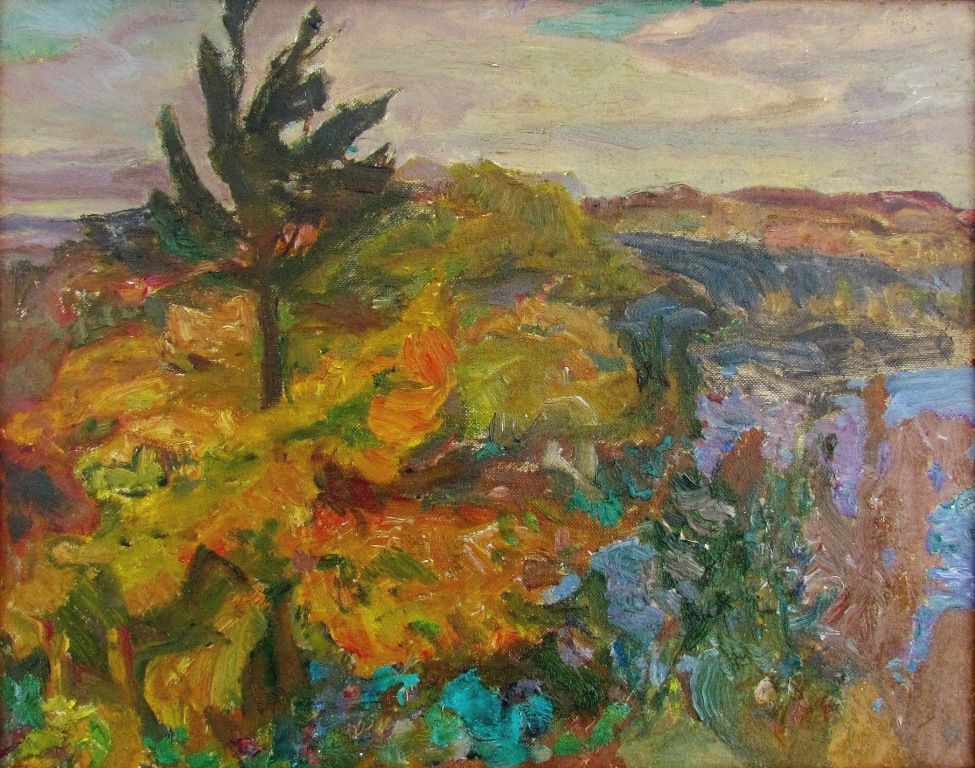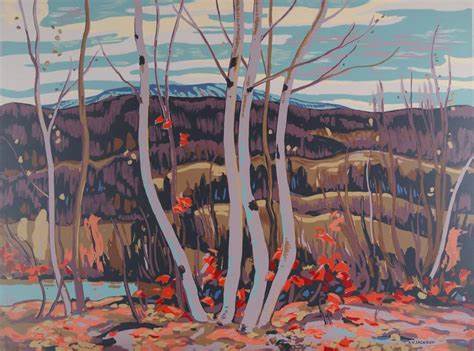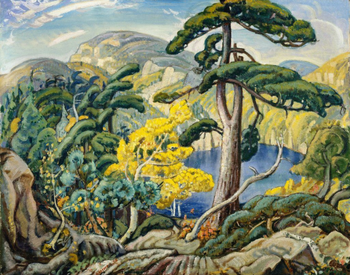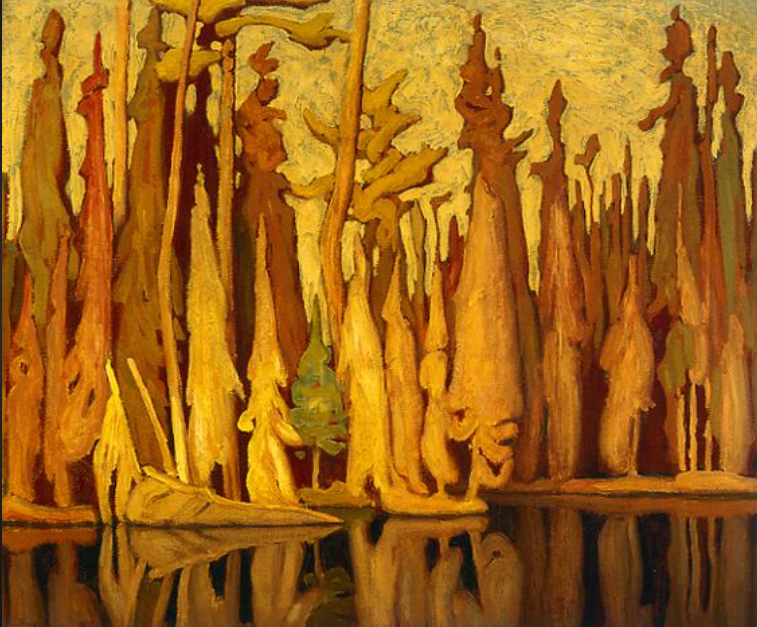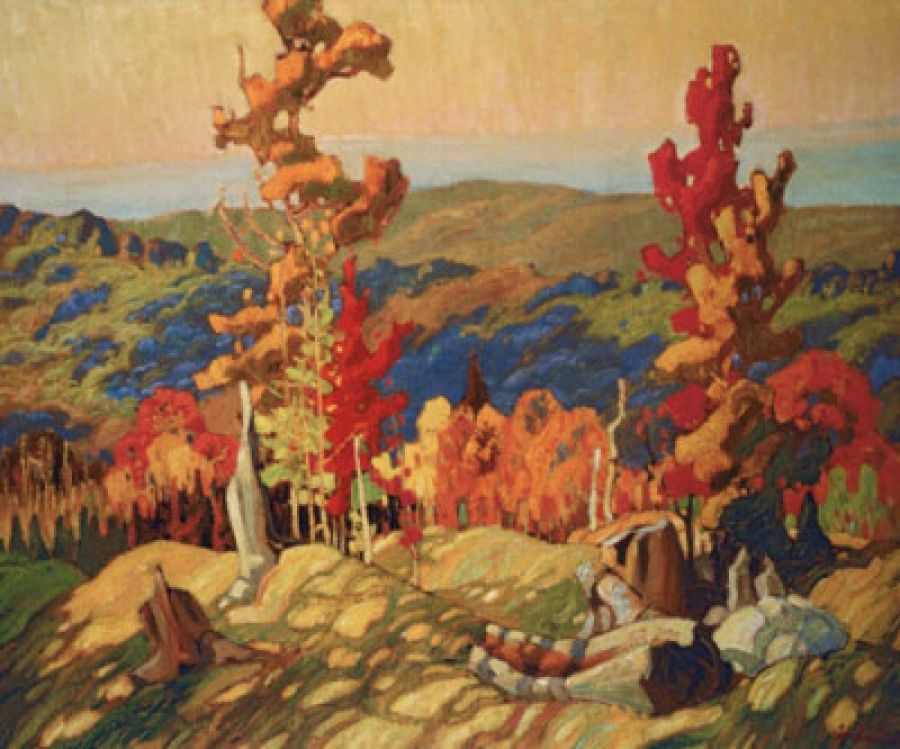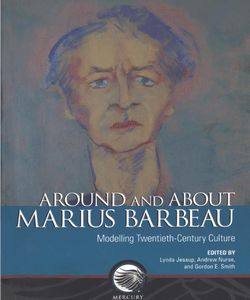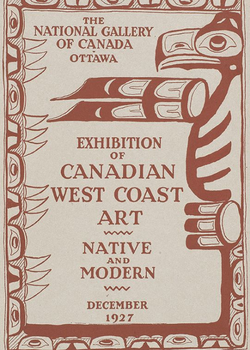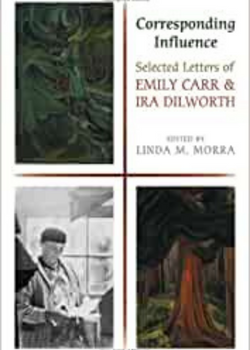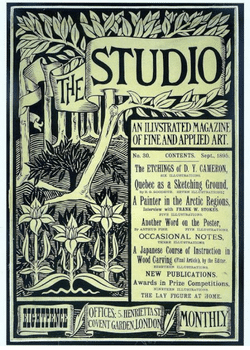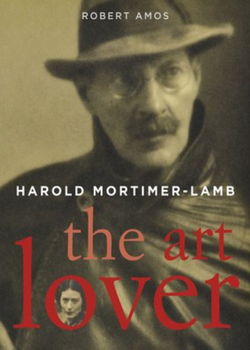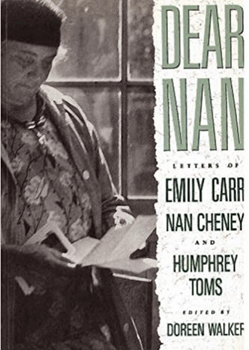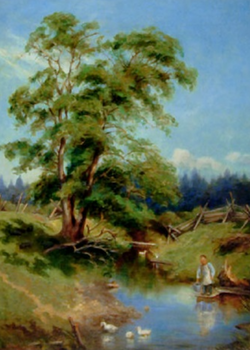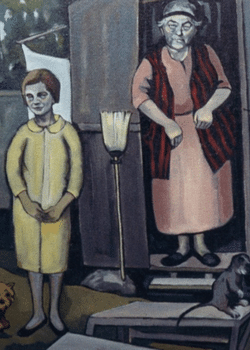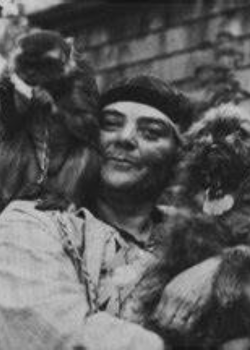Emily Carr artistic inclinations began in her early life. The artistic training that was part of a young girl's life from a middle-class Victorian family was designed to "inculcate the accomplishments" of femininity and morality . Many of Emily's childhood art teachers produced significant amounts of work before, during and after having given her private lessons.
Here are some other people who had a significant impact on Emily Carr's life and art.
Her Art Instructors
in Victoria
1879 - 1990
When Emily was in her teens, it was not out of the ordinary for upper middle class young ladies to receive training in drawing and painting as a standard part of their formal education. Such artistic training in the "accomplishments" was considered a necessary market of class status and refinement of character. Emily spent the first few years of her artistic education at a private school run by Mrs. Frazer at Merrifield Cottage near her home in James Bay. There she received drawing lessons from Miss Emily Woods every Monday. Woods was born in Ireland but her family immigrated to Victoria in 1860. Along with Emily Carr's older sisters, she attended Angela College, an Anglican private girl's school, where they all received lessons in pencil and watercolour drawings. Woods excelled in botanical and landscape drawings. Over 300 of her own pencil and watercolour drawings are held in the BC Archives collections. Many of them are included in the recently published book Wild Flowers to illustrate the 21 vignettes that Carr wrote while she was housebound in the winter of 1941 recuperating from the stroke she had the previous June.
In San Francisco
1891 - 1893
Emily departed for the California School of Design in August 1891. The school was the teaching arm of the San Francisco Art Association. Since its founding in 1874, it had grown into a thriving and well respected institution, though it was criticized for being cautious and conservative. The majority of the school's teachers, mostly American born, had studied at prestigious Academies in Paris. Unlike these prestigious art institutions, the California School of Design allowed women to draw from the nude -- a class Emily deliberately avoided, at least at this early stage in her artistic career. Students were accepted upon submission of a portfolio of work in advance. Tuition was $12 per class per month, $16 for oil painting. Classes met from 9 to 5 five days a week with an optional Saturday class. The curriculum included drawing from antique and life, portraiture, still life and landscape painting, composition and perspective. There were usually sixty to seventy students and four faculty members for the regular course of study. Emily was an enthusiastic student for just over two years before she was beckoned back home due to strained family finances. She arrived back home in Victoria a week before Christmas 1893.
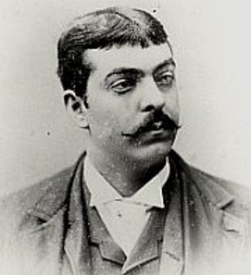
Amadee Joullin
b. 1890 San Franciscod. 1893 San Francisco
Amedee Joullin is known as one of the first distinguished Western painters to depict the American Indian within their own surrounding and landscapes. Born in San Francisco on June 13, 1862 of French parents, Joullin studied locally at the California School of Design and furthered his art studies in Paris at the presigious Academie Julian and Ecole des Beaux Arts. He spent several years during the 1880’s in Paris and upon his return to San Francisco became an an instructor at School of Design from 1887-1897. Carr was one of his students. Joullin also spent many months in New Mexico sketching the Pueblo Indians and made efforts to learn their customs and manners. He befriended the Indians, living with them, and they granted him the favor of posing for his paintings. He painted their living situations and everyday scenes, and was one of the few artists to gain as close an access to their private society.
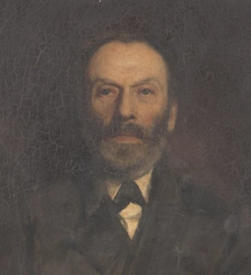
Arthur Mathews
b. 1860 Wisconsind. 1945 San Francisco
Arthur Mathews was an American painter and one of the founders of the American Arts and Crafts Movement. Trained as an architect and artist, he and his wife Lucia Kleinhans Mathews had a significant effect on the evolution of Californian art in the late 19th and early 20th centuries. Trained in in Paris at the Académie Julian from 1885 to 1889, he was influenced by the tonalism of James Abbott McNeill Whistler. Soon after his return from Paris in 1890, Mathews, once a student of the California School of Design, became its director and was the Director during Carr's studies at the school from1890 - 1893. He vigorously supported the presence of female students at the School.
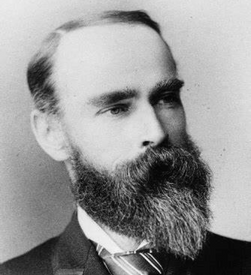
Raymond Yelland
b. 1848 Londond. 1900 California
Born in London in 1848, Raymond Yelland emigrated to America with his family at age 3 and had decided by age 12 to pursue an art career. He studied at the National Academy of Design in New York, taught there for one year and served in the Federal Army during the American Civil War. He settled in Oakland in 1874, where he painted scenes of the Northern California coastlines and nearby marshes. A generous instructor, Yelland taught art at Oakland’s Mills College, The California School of Design in San Francisco and at UC Berkeley. Through his evolution, the he became known for pursuing a variation of the Hudson River School style, known today as Luminism. Along with prominent Eastern artists, Yelland explored harmonies created by light reflected in atmosphere.
.png)
Oscar Kunart
b. 1830 Germanyd. 1909 San Francisco
Born in Dresden, Germany, Oscar Kunath was educated in his native land before coming to the U.S. in 1860. He worked in Philadelphia until 1867 and was in New York before moving to San Francisco in 1873. The following year he returned to Europe for two years of art studies in Munich. After his return to his adopted land, he stayed in New York until settling in San Francisco in 1878. He taught at the California School of Design and established a studio where he painted many portraits and miniatures of the local elite. In his leisure, Kunath painted landscapes and genre scenes. He possessed a fine tenor voice and was affiliated with local musical societies. He also maintained a studio in Los Angeles. Emily attended his portraiture classes from 1910 - 1911.
in England
1899 - 1904
Emily Carr travelled to London to attend art school the Westminster School of Art at the age of 28. By that time, two of her childhood sketching partners, Sophie Pemberton (1869 - 1959) and Theresa Wylde (1870 - 1949) had been to London numerous times and held successful exhibitions. To earn the money for the trip, Emily gave drawing lessons to children in the family barn and her three sisters held fundraising events in the community. Emily spent almost five years in England and surrounding areas, and during this time her life completely changed. The last 18 months of her stay in England were spent in a sanatorium convalescing from what today would be diagnosed as a nervous breakdown. Emily would go on to write and illustrate Pause, a book of short stories based on her experience in the sanatorium that fully illustrates her personality like no other.

John William Whiteley
b. 1860 Englandd. 1936 England
At the Westminster School of Art in London, Emily enrolled the studio of John Whiteley who was primarily known as a watercolourist. His reputation was modest but he was a good teacher and Emily liked him. He did not condescend to women students and, like Talmage, he encouraged Emily to work in outside in the woods en plein air instead of the studio that Emily found stuffy and claustrophobic. Where Talmage had taught her a great deal about light effects in foliage, it was Whiteley who first taught her to see "the coming and going among the trees" and sharpened her awareness of of them as living, growing and constantly moving things. From now on, Carr tried to reach beyond the visual, to express the sanctuary, vitality and peace she found among the giant trees of Vancouver Island and Canada's west coast.
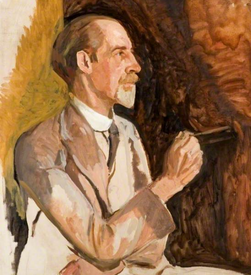
Algernon Talmage
b. 1871 Englandd. 1939 England
Algernon Talmage was a minor British Impressionist painter. His palette often shows the stunning brightness of light found in Cornwall. His paintings were typically made ‘on-the-spot’ and he was able to achieve an impressive intensity of colour and light. He is best known for tutoring Emily Carr during her studies at St Ives in England where he lived and worked in his studio called 'The Cabin' located on Westcotts Quay, St Ives. His criticism was a significant early influence on her work, encouraging her earliest forays into the forest paintings that would eventually become her trademark. Emily's vivid palette grew from his critical reminder that "there is sunlight in the shadows."
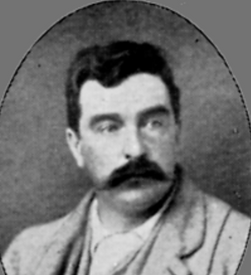
Julius Olssen
b. 1864 Londond. 1942 Ireland
Olsson was born in Islington, London, to a Swedish father and an English mother. He was an important figure in the St Ives school of artists where, from 1890 to 1912, despite having little or no formal artistic training himself, he taught alongside Louis Grier and later Algernon Talmage. His work was first accepted at the Royal Academy in 1890, and he joined the New English Art Club in 1891. In 1912 he returned to London. During his time at St Ives, the town drew in many artists and Olsson taught many of them, including Emily Carr and others. In St Ives, with his artist wife Kathleen, he designed and set up a home and studio that would become the St Eia Hotel 1914. The studio was situated with views North to St Ives Harbour and round to the east overlooking Carbis Bay.
in France
1910 - 1911
Emily and her sister Alice departed for France in July 1920 where she had enrolled at Academy Colarossi in Paris. After a three week train trip across Canada with various stops along the way including a week's visit with a friend in Edmonton to drop off Emily's dog Billie in her care, and twelve days in Quebec City resting up for the upcoming voyage and so Alice could practice her French. They boarded the Empress of Ireland on August 12. At the end of the eight day Atlantic crossing, landing in Liverpool, then a train ride to London -- where Emily purchased a parrot she named Rebecca, much to Alice's dismay -- then a night boat across the channel to Le Havre, a train ride to Paris and then another important chapter of Emily's artistic life begins.

Phelan Gibb
b. 1870 Englandd. 1948 England
When Carr arrived in Paris in 1910, she was equipped with a letter of introduction for Phelan Gibbs on the recommendation from another artist familiar with his work. He had studied in Newcastle, Edinburgh, Paris, Antwerp and Munich. For a quarter of a century he worked in Paris and was influenced by the work of Cézanne, Picasso, and Matisse. Gertrude Stein, considered the mother of avant-garde, was a close friend and a firm supporter of his artistic vision. He exhibited in group exhibitions at Salon d’Automne and in New York. Had first London solo show at Baillie Gallery, 1911. Gibb’s exhibited at the 1913 International Exhibition of Modern Art organized by the Armory Show American Association of Painters and Sculptors in New York City. It was during this association with Gibb hat Emily began experimenting with perspective, scale and colour, rather than remaining faithful to literal representations of natural forms.

John Duncan Fergusson
b. 1874 Scotlandd. 1961 Scotland
John Duncan Fergusson was the most internationally recognised artist of the Scottish Colourists. Spending most of his life split between Paris and London, he was highly influenced by the French modern movements of the early twentieth century. 1907 he relocated to Paris permanently, where he quickly became influenced by the fauvist movement, which altered the style of his works greatly. He gained a deeper appreciation for the female form, and began using bolder and brighter colours. Fergusson was born in Leith, but took up his training in Paris at the Academie Julian and Academie Colarossi where he became an instructor during Emily's studies in 1920. After a month at Colarossi, at Henry Gibb's suggestion, Emily left Colarossi and joined the daytime classes at Fergusson's private studio. He was more closely linked to the English-speaking community than Gibb and one of the mot interesting British painters in Paris.
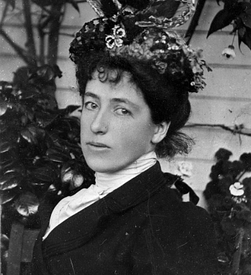
Frances Hodgkins
b. 1869 New Zealandd. 1947 England
Frances Mary Hodgkins is arguably New Zealand’s leading expatriate artists. Her works capture the spirit of an era greatly influenced by Impressionism and the beginnings of en plein air painting, Post-Impressionism, Fauvism. During her time in Britain she became one of the leaders of the English avant-garde movement. The year before Carr attended the Colarossi, Hodgkins had been hired as the first woman instructor in the art school's history. Like Carr, Hodgkins also supported herself by teaching, painting, and illustrating and built up her reputation with her portraits of Maoris, the local Indigenous people. While Paris served as a base for Hodgkins on and off for many years she would spend the summer months in popular French coastal locations. With a professional life that spanned fifty-six years, Hodgkins was one of the foremost artists of her generation.
in Canada
1927 & beyond
It was at the exhibition on West Coast aboriginal art at the National Gallery in 1927 that Emily first met members of the Group of Seven, at that time Canada’s most recognized modern painters. Of the Group, Lawren Harris was the most encouraging and became a particularly important supporter: “You are one of us,” he told Carr, welcoming her into the ranks of Canada’s leading modernists. Through her extensive correspondence with Harris, Carr also became aware of and studied Theosophy and Northern European symbolism.
The encounter ended the artistic isolation of Emily’s previous 15 years, leading to one of her most prolific periods, and the creation of many of her most notable works.
The Group of Seven
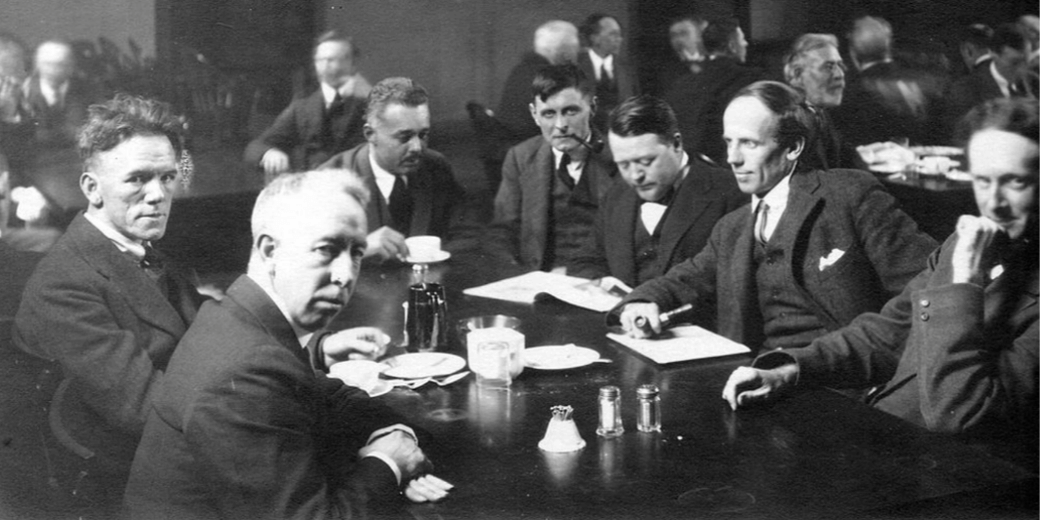
1920 - 1933
The Group of Seven, also known as the Algonquin School, was a school of landscape painters. It was founded in 1920 as an organization of self-proclaimed modern artists and disbanded in 1933. The group presented the dense, northern boreal forest of the Canadian Shield as a transcendent, spiritual force. Their depictions of Canada’s rugged wind-swept forest panoramas were eventually equated with a romanticized notion of Canadian strength and independence. Their works were noted for their bright colours, tactile paint handling, and simple yet dynamic forms. In addition to Tom Thomson, David Milne and Emily Carr, the Group of Seven were the most important Canadian artists of the early 20th century.

J E H MacDonald
b. 1873 England | d. 1932 Toronto Among the Group of Seven, of which he was a founder, J.E.H. MacDonald was one of the best trained. In 1895, he took a position as a commercial designer at Grip Ltd., where he would eventually work with other future members of the Group: Tom Thomson, Frank Johnston, Franklin Carmichael, Aruthur Lismer and Fred Varley. In 1911, he resigned his designer position at Grip Ltd. and moved with his wife and child to Thornhill, Ontario, to pursue a career as a landscape artist,

Fred Varley
b. 1881 England | d. 1969 Toronto In early life Varley spent much time in the English countryside and became intensely spiritual, finding God in nature, not in the church. After unsuccessful starts at careers as an illustrator and art teacher in England, Varley immigrated to Canada in 1912. Through Arthur Lismer, a Sheffield friend who had moved to Canada a year earlier, he found employment as a commercial illustrator at Grip, a commercial design firm in Toronto and befriended Tom Thomson and Frank Carmichael and other future members of the Group.

A Y Jackson
b. 1882 Montreal | d. 1974 Kleinburg, ON Jackson’s early art training was partly on the job as a commercial artist. Anxious to become a painter rather than a commercial artist, Jackson enrolled in the Académie Julian in Paris in September 1907 and stayed in Europe until December 1909, studying, travelling and sketching. He returned to Canada, in 1909, first to Montreal and then to Toronto where he would meet up with Tom Thomson. The two would soon become firm friends and painting partners.
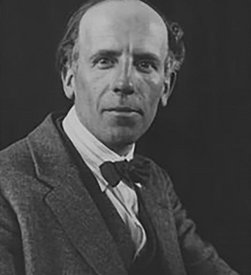
Arthur Lismer
b. 1885 England | d. 1969 Montreal After eight years of formal art studies, in England, Lismer moved to Canada in 1911, seeking work as a commercial illustrator that would result in his meeting with future members of the Group of Seven. Lismer began his distinguished career as an art educator as principal of the Victoria School of Art and Design in Nova Scotia. While an accomplished painter, Lismer devoted most of his time to art education. From 1927 to 1938 he was the educational supervisor at the Art Gallery of Toronto (now the Art Gallery of Ontario).
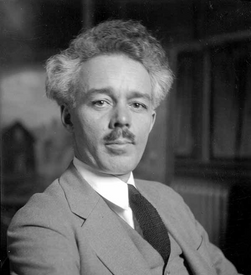
Lawren Harris
b. 1885 Brantford, ON | 1970 Vancouver Lawren Harris was the catalyst and leader in the creation of the Group of Seven, founding member and first president of the Canadian Group of Painters, and the painter who would influence other Toronto painters to paint abstractly. Harris had a profound influence on three generations of artists in Canada not the least of which was Emily Carr, Emily Carr first met Lawren Harris in Toronto 1927 and they became close friends, writing to each other frequently. Lawren became the executor of her paintings.
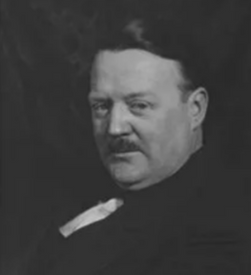
Frank Johnston
b. 1888 Toronto | d. 1949 Toronto Johnston was well trained in academic practice, first at Toronto's Central Technical School and then Central Ontario School of Art. A versatile artist comfortable painting in oil, watercolour or tempera, Johnston painted everything from pastoral scenes in the Ontario and Québec countrysides to the landscape and peoples of the Arctic. His association with the Group was brief. By 1921, he left Toronto to become the Principal at the Winnipeg School of Art. By 1927, he returned to Toronto as the principle at the Ontario College of Art.

Franklin Carmichael
b. 1890 Orillia, ON | | d. 1945 Toronto A founding member of the Group of Seven, Carmichael was active and influential as a painter, industrial designer and teacher. Sharing studio space with Tom Thomson, he worked as a commercial artist in Toronto. He was also a founding member in 1933 of the Canadian Group of Painters whose original members included Emily Carr. Like the other Group of Seven members, Carmichael was influenced by Theosophy, a quasi religion that believes the purpose of human life is spiritual emancipation, and by transcendentalism and the writings Henry David Thoreau.
Others in Her Circle of Friends, Fans, & Supporters
Emily Carr's most important relationships were with her sisters. Throughout most of their lives, the five Carr sisters remained in close proximity, often living together. As the youngest (and most cantankerous), Emily was often treated as a difficult child by her siblings, even during her adult years. But despite frequent fighting, she looked to them, throughout her life, for support, love, and companionship. She had a number of other important friendships, including one with Lawren Harris, a member (some would say leader) of the Group of Seven. Another lifelong friendship was with Sophie Frank , a Squamish Indian of the Salish nation who lived on the North Vancouver Reserve. Mired in poverty and sometimes alcohol, Sophie had 20 children of which only one survived. Though the Canadian artist and the Native Indian were worlds apart in background and life experiences, the friendship endured. Carr also interacted well with children, up to a point. For the most part, her closest and dearest companions were her pets, especially her pet monkey Woo.
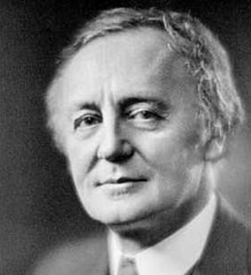
Marius Barbeau
b. 1883 Quebecd. 1969 Ottawa
Canadian ethnographer and founder Canadian anthropology and often referred to as the person who discovered Emily Carr. A Rhodes Scholar, he is best known for an early championing of Québecois folk culture, and for his exhaustive cataloguing of the social organization, narrative and musical traditions, and plastic arts of the Tsimshianic-speaking peoples in British Columbia (Tsimshian, Gitxsan, and Nisga'a), and other Northwest Coast peoples. He developed unconventional theories about the peopling of the Americas.
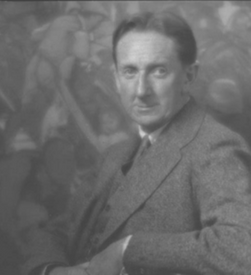
Eric Brown
b. 1887 Englandd. 1939 Ottawa
In 1909, Brown immigrated to Canada and upon his arrival, he organized a loan exhibition of British paintings in Montreal and worked for the Art Gallery of Toronto. In 1910, Brown was appointed as the first director of the National Gallery of Canada. Brown's primary concern was the establishment of the Gallery and the building of its collections as well as sending exhibitions and making extended loans to other museums across the country. In 1927, he was focused on seeking artwork for the upcoming exhibition that would go on to include Carr. She also designed the exhibit poster.
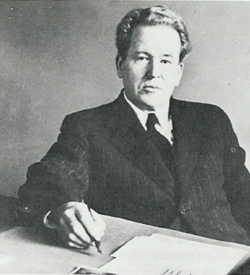
Ira Dilworth
b. 1894 Winnipegd. 1920 Winnipeg
Ira Dilworth was a Harvard educated administrator, teacher, editor, music conductor and a high level program director with CBC. As a child he moved with his family to the Okanagan Valley and there studied piano. He served the arts in British Columbia tirelessly, 1915-38 as a teacher of English literature, then as an administrator with the CBC, as the literary executor of the writings of the painter Emily Carr, and as the first president (1946) of the Community Arts Council of Vancouver.
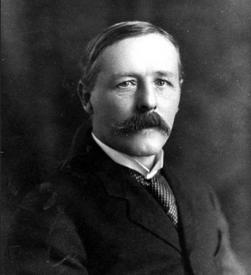
Charles Newcombe
b. 1851 Englandd. 1924 Victoria
Newcombe was a British botanist and ethnographic researcher and best known for his studies of the First Nations people of Canada. He received his MB from the University of Aberdeen in 1873 and his MD in 1878. In 1884, he emigrated to the United States, and in 1885 moved his family to Victoria. His wife Marian died after the birth of their sixth child in 1891, leaving him with two daughters and four sons. He ceased to practice medicine after 1894 and began to study the botany of North America. He made many trips to Haida Gwaii (formerly the Queen Charlotte Islands) and began to collect their artifacts to "preserve" them from, what was then thought to be, the impending demise of the native culture. Much of his work, including collection of plants, mollusks, fossils, aboriginal artifacts and information, was done with the help of his youngest surviving son, William Henry Arnold Newcombe (1884-1960).
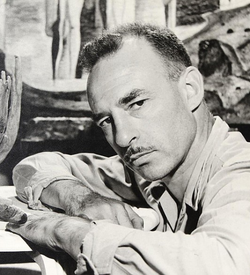
William "Willie" Newcombe
b. 1884 Victoriad. 1960 Victoria
William Newcombe, like his father, pursued anthropology and biology. He was curator of the Provincial Museum from 1928-1932. William lived a secluded, reclusive life for the rest of his years in the house at 138 Dallas Road until his death in 1960 at 75. He had been a close friend of Emily Carr. He was her handyman who helped around the house and in the moving, crating and shipping her paintings. A constant supporter and collector of her work, he eventually became one of the three the trustee of her estate along with Lawren Harris and Ira Dilworth. After his death the house was found to be a treasure trove of aboriginal arts and crafts from the west coast. As well there were books, papers, photographs and nearly 100 Emily Carr paintings. In 1961 the Province of British Columbia purchased C.F. Newcombe's personal collection from his heirs.
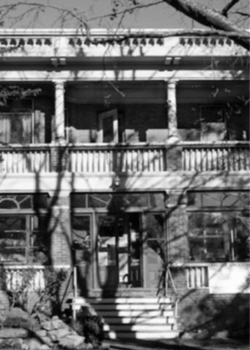
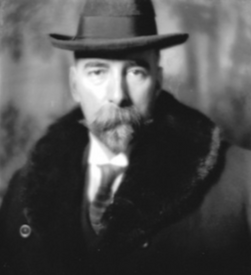
Harold Mortimer Lamb
b. 1872 Englandd. Burnaby, BC
Lamb was an Anglo-Canadian mining engineer, journalist, photographer and artist. Born in England, his family immigrated to Canada in 1889. He moved to Montreal in early 1900 to take on the post as Secretary to the Canadian Mining Institute where he came into contact with many of the leading artists of the day including A. Y. Jackson and was the Montreal correspondent for the leading art journal The Studio. As an art critic he wrote in defence of the Group of Seven at a time when most other critics were attacking their work. Around 1920, he left his position at the Mining Institute in Montreal to take up the post of Secretary-Treasurer of the BC Division in Vancouver where he would soon open an art gallery that would soon thereafter feature the work of the Group of Seven. After his retirement from the mining industry in 1941, he himself began to paint, his works being exhibited in Montreal and Vancouver.

Sophie Frank
b. XXXXd. XXXX
Sophie Frank (Sewinchelwet) was a Squamish basket weaver from North Vancouver. She bore 21 children all of which predeceased her at a young age. Carr met Sophie in 1905 while she was selling her cedar-root baskets door to door in Vancouver. Sophie traded a basket that Carr has admired in exchange for old clothers. They would remain friends for 33 years. Both women were skilled and talented artists. While they both loved the land, they both used different mediums to express their feelings. Sophie and other natives Carr that met in her travels appear frequently throughout her autobiographical stories and journals. Carr dedicated Klee Wyck, her first book to Sophie.
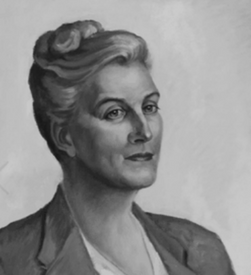
Nan Cheney
b. 1897 Windsor, ONd. 1985 Vancouver
Born in Windsor, Nova Scotia, Nan Cheney spent part of her childhood in Havana, Cuba, then studied art at Tulane University. She completed the “Art as Applied to Medicine” program at Johns Hopkins University (1921-23) where she worked under medical artist Max Brodel. She was a well-known B.C. portrait painter as well as a medical artist for the University of British Columbia, and McGill University. In 1924 she married Dr. Hill H. Cheney and in 1937 they moved to Vancouver. Cheney met and corresponded with many Canadian artists and she enjoyed a close friendship with Emily Carr in the period before Carr's work had gained general acceptance. Cheney collected material about Emily Carr until December 1979.
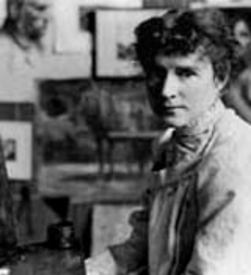
Sophie Pemberton
b. 1869 Victoriad. 1959 Victoria
Pemberton was a fellow student at drawing classes in Emily Carr's childhood and is considered to be British Columbia's first professional woman artist. Despite the social limitations placed on female artists at the time, she made a noteworthy contribution to Canadian art in her lifetime and, in 1899, was the first Canadian woman to win the Prix Julian from the Académie Julian for her portraiture. She was also the first artist from the province of British Columbia to receive international acclaim when her work was exhibited at the Royal Academy in London in 1897. Like Carr, she taught women artists in her studio in Victoria and and the two artists spent much of their lives in the same small city. The Art Gallery of Greater Victoria will showcase Pemberton at Unexpected: The Life and Art of Sophie Pemberton, Sept 23 - to Jan 21, 2024, an exhibition curated by Carr scholar and archivist Kathyrn Bridge.

Theresa Victoria Wylde
b 1870 Victoriad. 1949 England
Theresa Victoria Wylde was a fellow art student and childhood sketching partner of Emily's along with Sophie Pemberton. Wylde was born in Victoria, BC and came to attend the Slade School of Art in London in the early 1900s. During her time of study in London she had four showings with the Royal Academy. She returned to Canada for a period where she was a member of the Ladies Art Club of Vancouver, later known as the Victoria Sketch Club, where she taught. She would return to England with her sister Kate where she continued to paint until her death in the winter of 1949. Wylde was praised in her own time for portraiture and her ability to make the faces and expressions of her subjects so life-like with her firm but carefully drawn lines
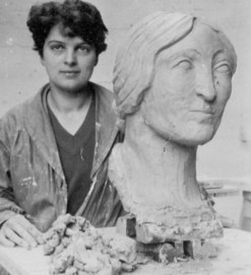
Edythe Hembroff Schleicher
b. 1906 Moose Jaw, SKd. 1994 Victoria
Edythe Hembroff-Schleicher was born in Moose Jaw, Saskatchewan. Her parents moved to Victoria when she was six. During high school she studied at the Island Arts and Crafts Club. After graduation, she went on to study art in San Francisco at the California School of Fine Arts (CSFA) and the California School of Arts and Crafts (CSAC) before heading off to Paris to study at the Ecole des Beaux-Arts and at Andre Lhote’s studio. Her interest in fashion would lead to her first meeting with Emily Carr in 1930. After reading an article about Hembroff-Schleicher's return from her painting adventures in France, Emily invited her to tea. Despite the 30 year age gap, the two women would become close friends. They shared the common experience of attending three of the same schools in England, France and California, and a love for sketching outdoors in Emily's travelling trailer, The Elephant.
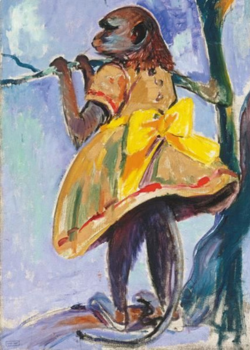
Woo
b. 1921 Indonesiad. 1938 Stanley Park, Vancouver
Born to a strictly religious Victorian family and the youngest of four older sisters, Emily increasingly turned to the company of animals to find the love and acceptance missing from her human relationships. When Carr spotted 2 year old green eyed Javanese monkey at the The Bird and Pet Store in Victoria in 1923, she traded $35 and one of her English bobtail puppies for Woo and took her home. Carr records her introduction to Woo in her journal, "Suddenly I wanted her...I wanted her tremendously." Woo was many things to Carr—a surrogate daughter, a reflection of herself, a piece of the wild inside the boarding house that she had built in 1913 hoping the rental income would free her up to paint. Things turned out worse than expected, and in her forties and fifties, instead of painting, the gifted artist found herself shoveling coal and cleaning up other people's messes. Woo and her antics served as a comedic distraction. Despite Carr’s clear love for Woo, while hospitalized following a stroke in 1937, she arranged for Woo to be sent to the Stanley Park Zoo. Bereft of her loving companion, Woo died alone in her cage in Stanley Park only a year later.
hosted, designed & maintained by Marilyn Jones for the Emily Carr courses, presentations, talks & walks she offers in person and online from Victoria, BC.


